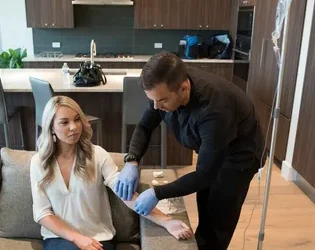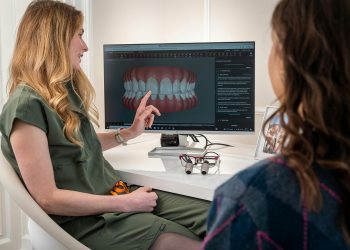Most of us think of the dentist as the go-to for anything teeth-related. And for good reason—your general dentist is the first stop for cleanings, cavities, crowns, and basic oral care. But what happens when something more complicated comes up? That’s where an oral and maxillofacial surgeon (OMS) comes in.
OMSs are specialists trained to handle complex problems involving the mouth, jaw, and face. They’re the ones you see for surgical procedures that go beyond the scope of your regular dentist. But how do you know when it’s time to make that leap?
When Your Dentist Can Handle It
General dentists are like your family doctor but for your mouth. They’re trained to spot problems, treat everyday issues, and help keep your teeth and gums healthy. If you have a small cavity, need a cleaning, or even a simple tooth pulled—your dentist has it covered. They’re also great at preventive care, like fluoride treatments or sealants, and they’ll often be the first to notice if something more serious is going on.
Dentists can also do minor procedures, like filling a cavity or fitting a crown. In some cases, they may even extract a tooth or place a small implant. But once things start getting more involved—like impacted teeth, jaw misalignment, or facial trauma—they’ll usually refer you to a specialist.
When It’s Time to See an OMS
An oral and maxillofacial surgeon steps in when surgery or advanced treatment is needed. If your wisdom teeth are impacted (meaning they’re stuck under your gums or growing in at the wrong angle), that’s a common reason to see an OMS. The same goes for more involved issues like jaw pain, bone grafting, or even facial injuries after an accident.
Another sign it’s time to see an OMS is if you’ve been told you need corrective jaw surgery—this isn’t just about straightening teeth; it’s about aligning your bite, which affects your ability to chew, speak, and even breathe properly. If your general dentist suspects you need this kind of work, they’ll likely send you to a trusted surgeon who has the skills and equipment to take care of it.
Clinics like Lindgren Dental Care provide oral and maxillofacial surgery services for cases that go beyond routine dental care. This might include more advanced procedures that require anesthesia, specialized tools, and extensive knowledge of facial anatomy.
Signs You Might Be Seeing the Wrong Provider
It’s not always easy to know whether to stick with your dentist or head to a specialist, especially when you’re in pain. A good rule of thumb: if your issue hasn’t improved after a couple of visits or if your dentist says, “This might be outside my scope,” it’s probably time to seek out an OMS.
You should also consider a specialist if you’ve had chronic jaw pain, recurring oral infections, or trouble opening and closing your mouth fully. These aren’t your average dental issues, and treating them often takes more than a prescription or a quick fix. An OMS can do a deeper evaluation—sometimes with 3D imaging or surgical consultations—to figure out what’s really going on.
It’s not about one provider being “better” than the other; it’s about finding the right tool for the job. Your dentist and your OMS often work as a team to make sure you get the care you need.
How the Referral Process Works
Most of the time, your dentist will refer you to an OMS when a problem goes beyond their training or equipment. This might seem like a hassle, but it’s actually a good thing—it means your provider knows their limits and wants you to get the best care possible.
Once referred, the OMS will usually do a consultation to assess your needs. They’ll look over your X-rays, possibly take new ones, and talk through your options. Some procedures are done right in their office under local anesthesia, while others may require sedation or a surgical setting.
Keep in mind: not all referrals are emergencies. Sometimes they’re simply proactive. For instance, teens often get referred for wisdom teeth removal even if those teeth aren’t causing pain—yet. The idea is to prevent future issues before they become bigger (and more painful) problems.
Conclusion: The Right Expert at the Right Time
Knowing when to see your general dentist and when to seek out an oral and maxillofacial surgeon can make a huge difference in your health—and your comfort. Your dentist is your go-to for everyday care and early detection. But when things get complicated, it’s smart to bring in a specialist.
Trust your providers to guide you in the right direction. And if you’re dealing with anything like impacted teeth, jaw pain, or facial injury, don’t wait too long to ask about a referral to an OMS. You’ll save yourself time, pain, and potentially more complex treatment down the line.
Understanding the difference isn’t just about knowing who does what—it’s about getting the right care when it counts most.


























